Contract Lifecycle Management 101: A CLM Guide
- Published:
- Updated: May 28, 2024

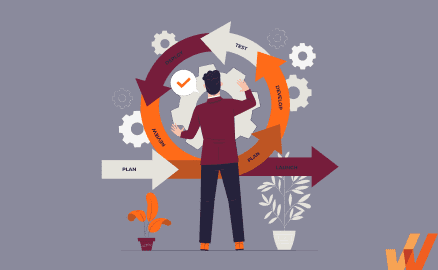
Force Majeure has been one of the most negotiated terms in this pandemic. Changing business dynamics in the period of Covid-19 have accentuated the risk of contract failure, and contracts continue to underperform due to unclear and inconsistent legal language.
Contracts form the core of every business relationship hence directly impact the revenue and spend of an organization. Many organizations haven’t automated their contract management approach and are still using paper-based methods.
The uncontrolled revisions, outdated templates, and inconsistent language create risk exposure for the organization. More often than not, digitalization is limited to the usage of Microsoft Word. The absence of automation again poses the same challenges.
Because of growing customer expectations, disrupted supply chains, and volatile market requirements, there’s a dire need for change in the contract management scenario. Companies need to adopt an efficient contract lifecycle management process without any room for ambiguity.
What is Contract Lifecycle Management?
Contract Lifecycle Management (CLM) refers to the management of contracts to maximize business performance and minimize risk throughout the contract lifecycle. However, the scope of performance maximization and risk minimization is limited in manual contract management.
According to Gartner, “CLM is evolving from an operational record-keeping system, primarily used for legal audit purposes, to an enterprise-level core system addressing business risk, costs, and the pursuit of revenue maximization.”
Contracts, being legally binding, are critical to an organization’s performance. Unstructured contract management will expose your business to operational and financial risks. There’s a favorable opportunity for digital transformation in contract lifecycle management. Organizations are engaging in the same to drive their performance and achieve their goals.
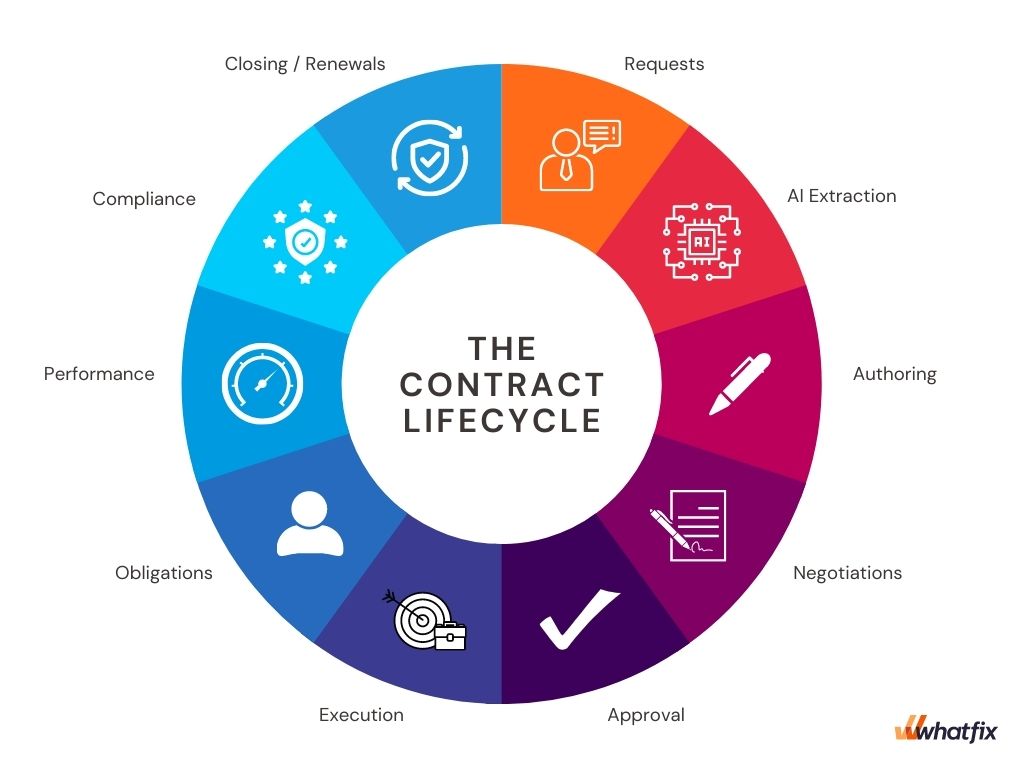
7 Stages of Contract Lifecycle Management
There isn’t a set framework of stages in contract management, and the lifecycle can differ according to organizational challenges and procedures. For effective contract management, it’s essential to understand various stages of the contract lifecycle.
1. Contract Request & Initiation
Before contract initiation, it is essential to identify business objectives and gauge the risk appetite of involved parties. Often, locating the correct contract template is difficult, thereby making contract initiation a time-consuming task.
Slow cycle time pushes revenue from a deal to the near future, making procurement a roadblock. A best-in-class contract lifecycle management solution maintains a template library and ensures easy availability of ready-to-use contract templates.
2. Authoring
Drafting a contract is an extremely critical step as it’s essential to set clear expectations for both parties. Any inconsistency in the language can lead to revenue losses if exploited as a loophole.
A well-designed CLM software offers standardized and approved legal language. The solution consists of a library of contract clauses and terms to choose from. Most contract professionals are comfortable drafting a contract in Microsoft Word. Often CLM tools accommodate this capability in their design and provide professionals an option of utilizing the formatting capabilities offered in Word.
3. Negotiation
This stage requires a lot of back-and-forth communication between the two parties. Simultaneous comparison of the redlined version of the contract is essential to arrive at a mutual consensus. A contract management solution offers an in-built redlining capability and a side-by-side version comparison. The solution also allows tagging of the required stakeholders for review.
4. Approval & Execution
A contract requires multiple approvals from different functions in the organization. This chain of approvals consumes a lot of time and makes the contract cycle longer. A sophisticated CLM solution offers dynamic approval functionality. Based on several criteria like dollar value, industry, and contract type, users can create parallel and series approval workflows. Once all the approvals are in place, contract execution can commence without any delay.
5. Contract Obligation
Contract lifecycle management doesn’t conclude with contract execution. Post execution, it’s essential to ensure that stakeholders meet their deliverables and fulfill their obligations regarding their timelines, performance, and payments. Contract tracking is essential post-execution, as it increases contract compliance. A contract management tool offers visibility and control via features like automated alerts, milestone tracking, dynamic workflows, and analytics.
6. Audit & Reporting
Contract audits are required to ensure compliance and reduce exposure to any operational/financial risk. Manual audits and reporting are prone to human error. The solution allows you to track the audit trail and generate on-demand reports with ease.
7. Termination & Renewals
Once a contract approaches its closing date, the termination/renewal opportunity should lead to revenue maximization and not go unnoticed. You can create automated alerts with a CLM solution. Based on the existing contract, a user can create a renewal contract in less time.
Who Is Involved in the CLM Process?
There are various stakeholders involved in different stages of contract lifecycle management. Each of the stakeholders including sales, legal, finance, and supplier, has priorities in managing the contract lifecycle. A collaborative approach is essential in an effective contract management process and requires a well-designed solution.

“When they showed me Whatfix, I approached our CLM IT committee and said we cannot successfully implement our new CLM solution without Whatfix.”
Sheila Dusseau, Head of Global Legal Operations at Ferring
Challenges with Traditional Contract Management
Research shows that poor contract practices in organizations cost them 9% of their revenues each year. Manual contract management is highly time-consuming and inefficient. Following are the challenges associated with the manual contract management process:
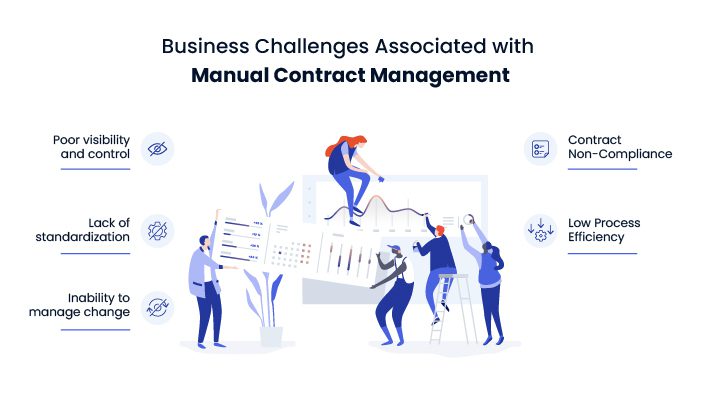
1. Poor Visibility and Control
With the involvement of multiple stakeholders at all times in contract lifecycle management, decentralized contracts offer poor visibility. Navigating through required documents is a task. Visibility is also essential during the contract renewal process. If the contracts and other legal documents aren’t visible in a centralized location, you can exercise limited control over them.
2. Lack of Standardization
Inconsistent legal language can create uncertainty in the contract, thereby increasing risk exposure. Loopholes because of the vagueness can further be exploited to result in loss of revenue or compliance.
3. Inability to Manage Change
A contract management solution is of prime importance to manage changes like renewal dates, pricing changes, and policy changes. Your retention rate is dependent on how efficiently you can communicate these changes to your vendors and other involved stakeholders.
4. Contract Non-Compliance
In the absence of a contract lifecycle management solution, contract tracking isn’t feasible post-execution. Obligation management becomes inefficient, cost comparison also becomes difficult, thereby increasing non-compliance.
5. Low Process Efficiency
The manual contract management process is highly inefficient. Document management is difficult, and because of increased timelines at each stage of the contract lifecycle, turnaround time (TAT) increases, resulting in lower process efficiency.
Digital Transformation of Contract Management
Due to challenges in the contract management space, there exists a need for digital transformation. Before Covid-19 adversely affected the commercial segment, 92% of companies realized a need for change in the digital era. However, Covid-19 has proved to be a digital accelerator, and at 79% of companies, digital transformation budgets grew in response to the new needs created in the pandemic.
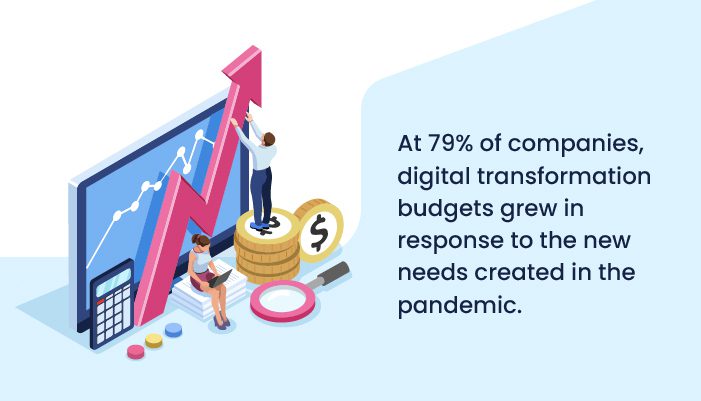
With organizations moving to a virtual environment and working from home being the preferable option, it is essential to use a CLM solution to speed up the contract lifecycle. Earlier the prime focus of organizations was cost reduction. In the pandemic, the focus has shifted to the value provided to the customers.
Digital contract transformation modernizes contracting efforts and allows harnessing of the contract data to deliverable actionable business insights.

Best Contract Lifecycle Management Software in 2022
There are over 70 CLM vendors offering SaaS solutions for companies looking to modernize their contract management processes. Here are the 8 leading CLM solutions to explore:
- Conga Contracts
- SAP Ariba
- Icertis Contract Management Software
- Evisort
- Docusign CLM
- LinkSquares
- Contract Logix
- Workday Strategic Sourcing
If you’re in the discovery and research phase of the CLM software buying process, check out our recent buyer’s guide on the best CLM software.
Benefits of Contract Lifecycle Management Software
Finding a CLM software application well-suited to your organizational needs is a critical task, and organizations often question its relevance in their business processes. However, a well-designed CLM solution enhances the process efficiency and proves ROI quickly for organizations.
Here are a few of the most impactful benefits of implementing a CLM software:
1. Seamless User Experience
Contract management solutions automate the entire lifecycle and reduce the risk of exposure and human errors. The ease with which you can handle complex contracts provides a seamless user experience.
CLM applications simplify the process of contract management and provide greater transparency. No matter who drafts the contract, a contract manager can track the contract details without referring to different documents.
2. Centralized Contract Repository
A CLM solution maintains a centralized repository of contracts and provides easy accessibility and visibility to enterprise-wide contracts. Document management becomes simplified and efficient with a contract lifecycle management solution.
3. Workflow and Stakeholder Engagement
Securing multiple approvals from different functions is a time-consuming task and increases contract lifecycle time. CLM solutions encourage a collaborative approach. It allows you to configure dynamic workflows and comment on suggested changes leading to better engagement of the stakeholders.
4. Contract Velocity
A well-designed CLM software platform decreases turn-around time (TAT) for contracts. It accelerates the closing of deals and results in higher revenue for the organization.
5. Contract Compliance and Quality
With a contract management tool, organizations will improve the overall quality and consistency of their contracts. Consistency in legal language improves the quality of contracts. It limits the chances of any liability created due to ambiguity in contracts. Compliance with supplier terms and timelines increases due to greater visibility, automated alerts, and improved obligation management.
6. Reporting & Analytics of Contracts
AI-powered analytics allows you to measure the contract’s performance and provides you insights to make changes in the contract management process early on.
CLM user adoption is imperative to derive the full value of your investment in a contract lifecycle management solution. Often the support teams are not equipped with enough resources to deal with the queries, making the investment in technology questionable.
A digital adoption platform provides organizations the tools to create in-app content that lays on top of your CLM to guide users through onboarding and training, as well as provides on-demand support. This helps drive CLM adoption through contextual training and turns your CLM users into power users quickly.
Whatfix is the leading DAP for enterprise onboarding a new CLM. With Whatfix, organizations are empowered to create in-app guidance and personalized training in the form of:
- Product tours
- Step-by-step flows
- Interactive walkthroughs
- Smart tips
- Compliance alerts
- Task lists
- Embedded self-help knowledge bases
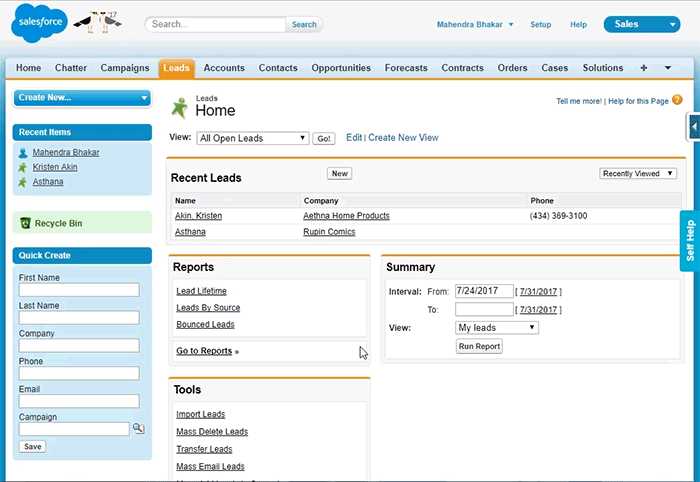
Whatfix accelerates user adoption of your organization’s new contract management solution and further analyzes the behavioral data to provide a window into how your CLM is being used, what features are being underutilized, what training content works best, and more.
Empower your employees with a modernized CLM solution and power it with Whatfix to maximize adoption and improve your team’s productivity. Discover how Whatfix can boost the digital adoption of your contract management solution. Schedule a personalized demo today!
Request a demo to see how Whatfix empowers organizations to improve end-user adoption and provide on-demand customer support
Thank you for subscribing!


